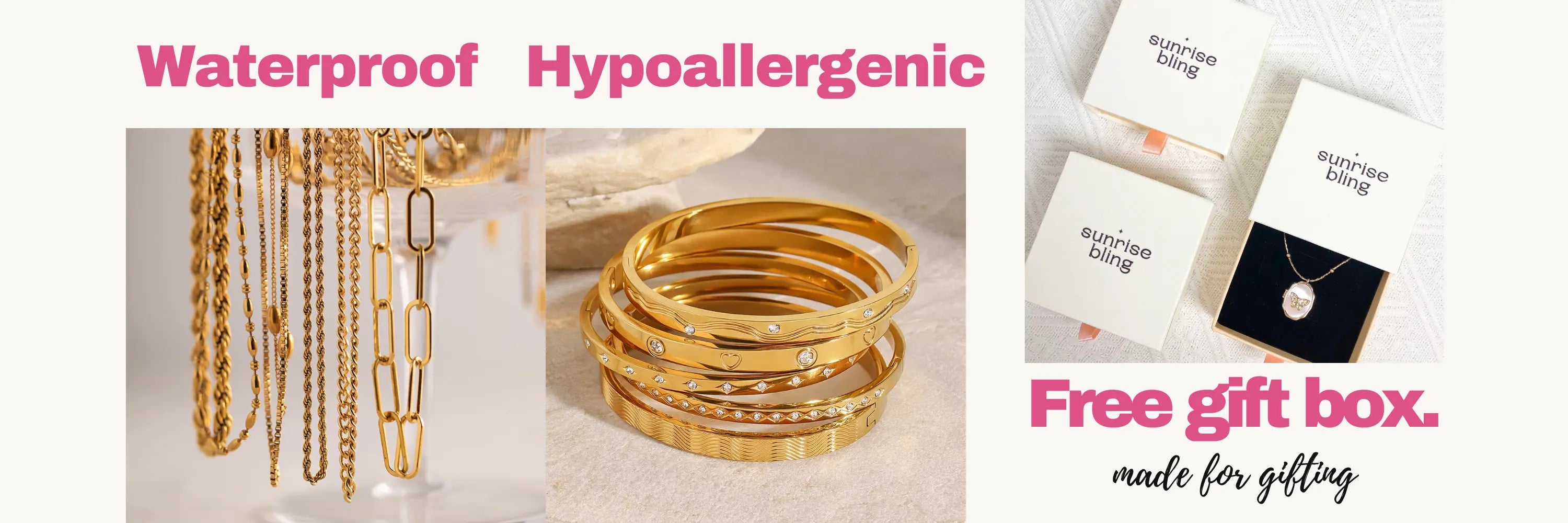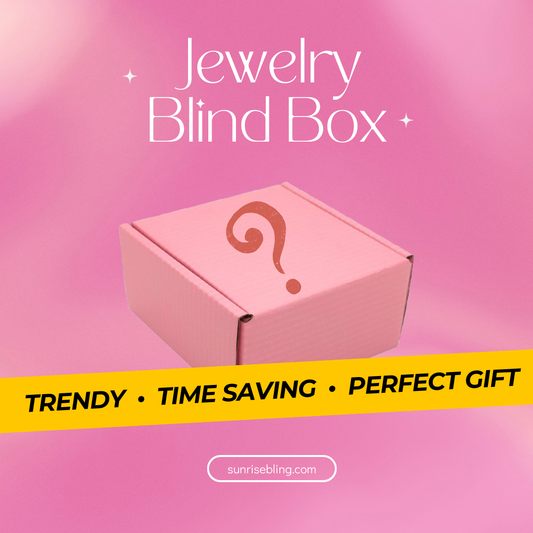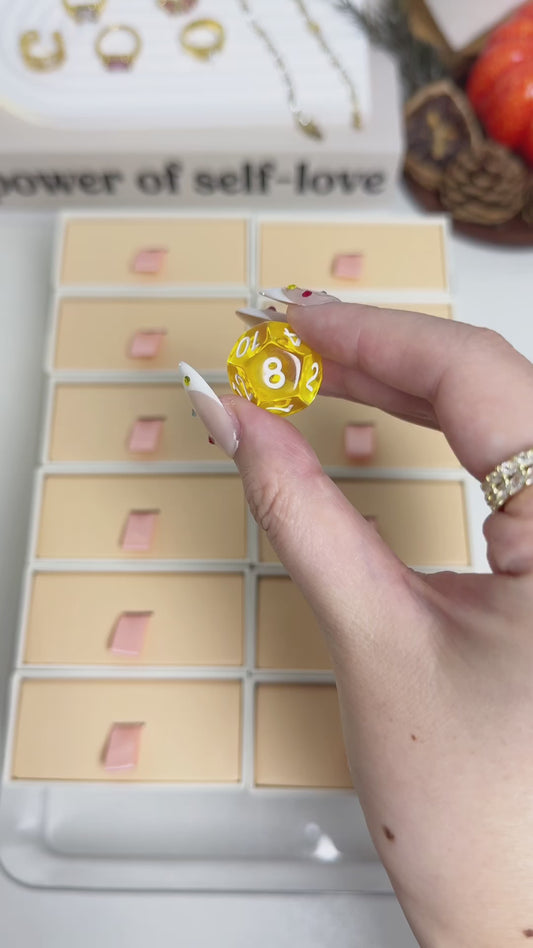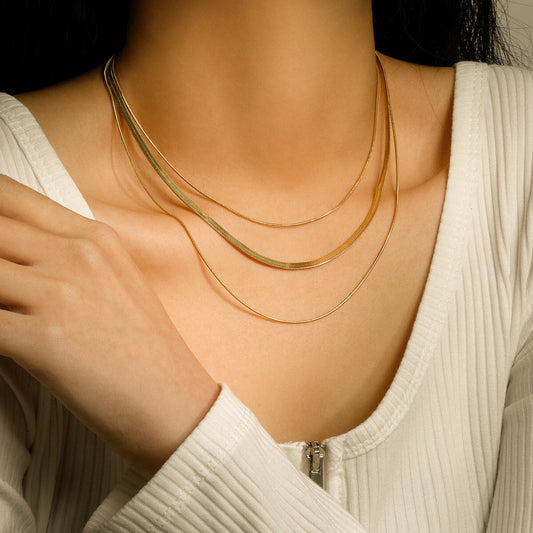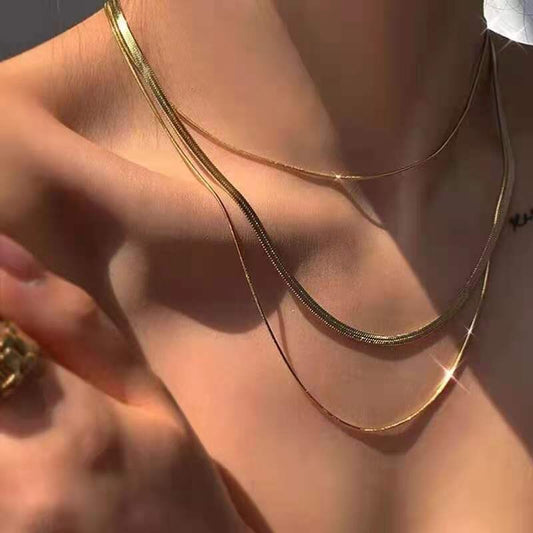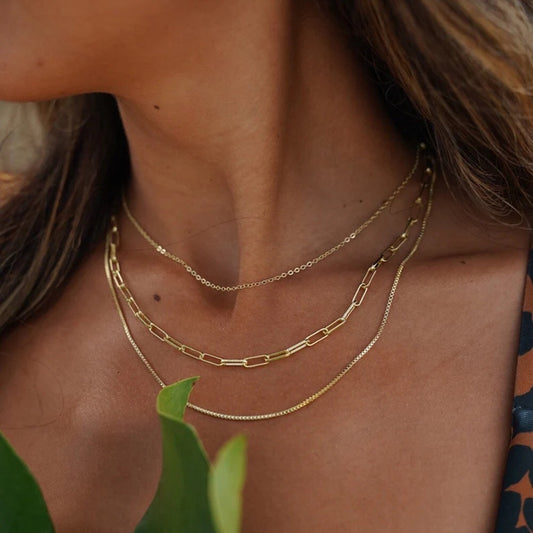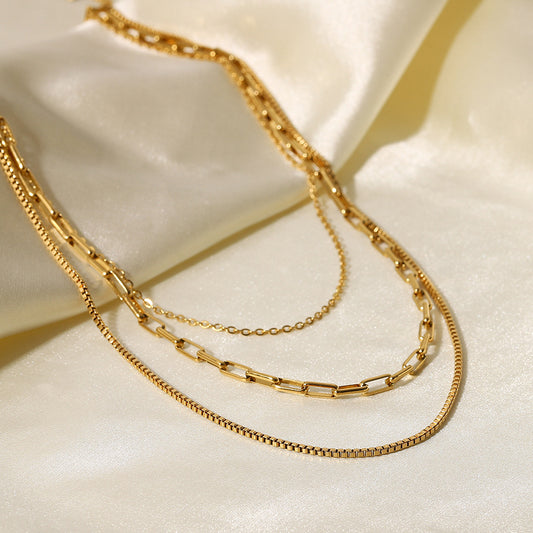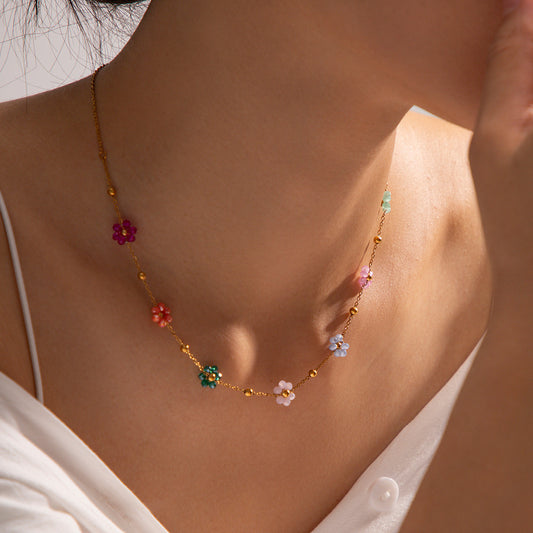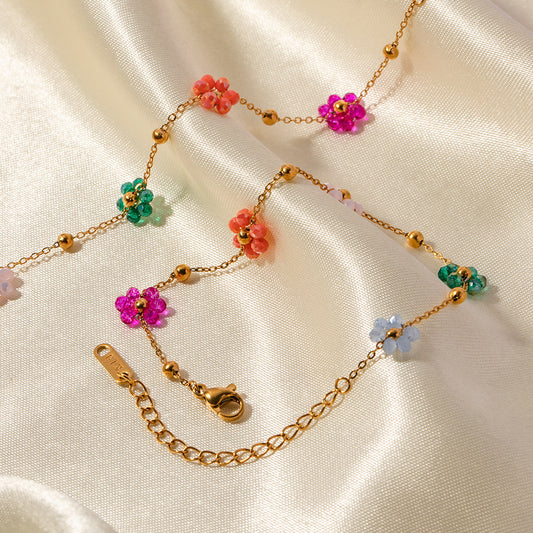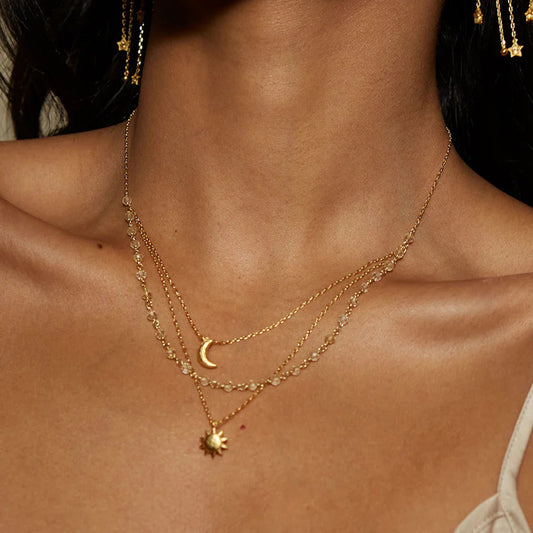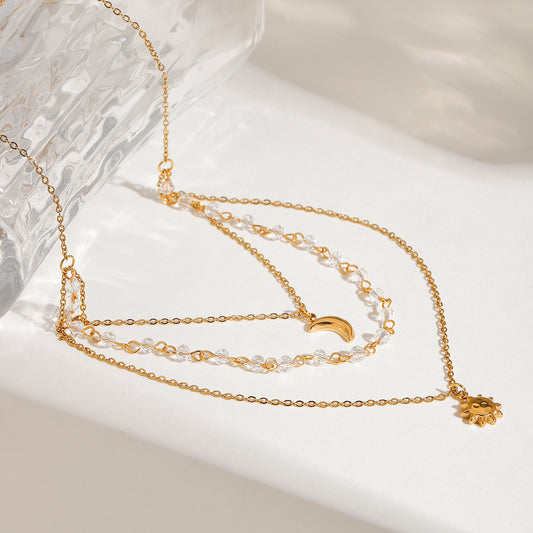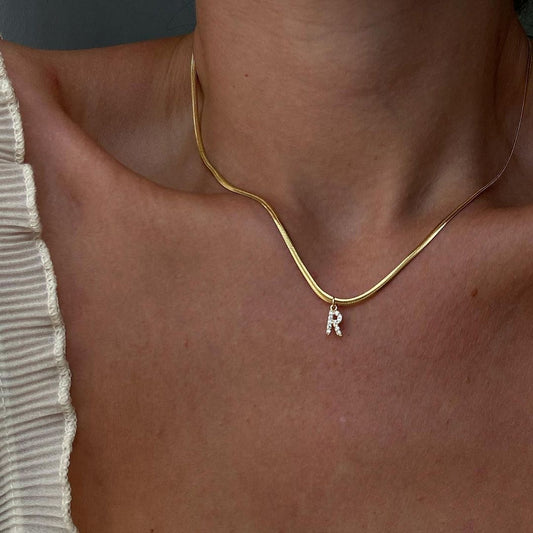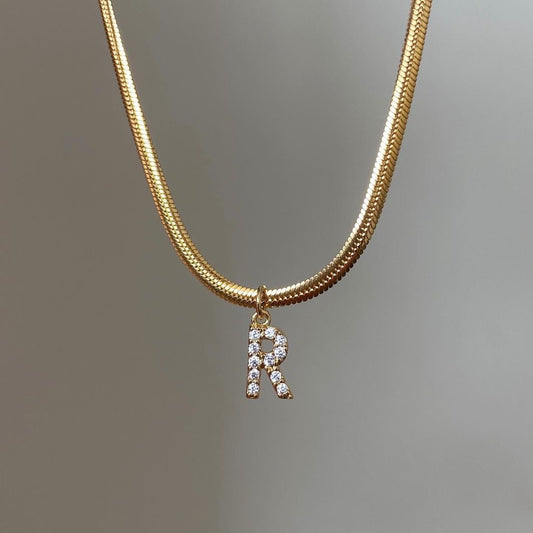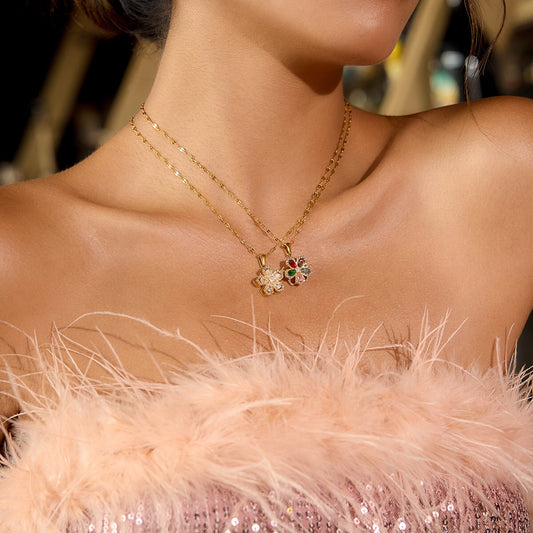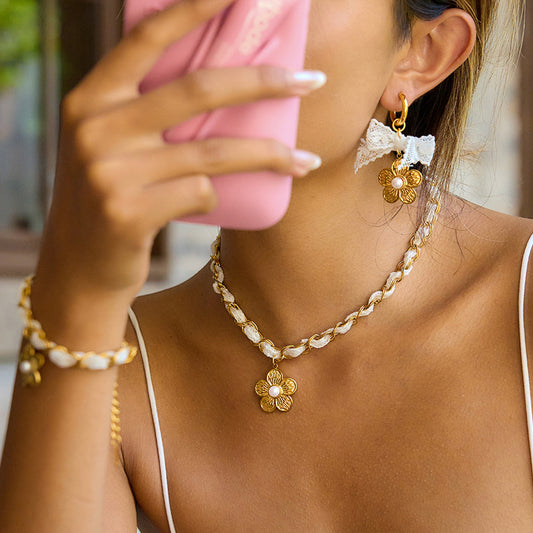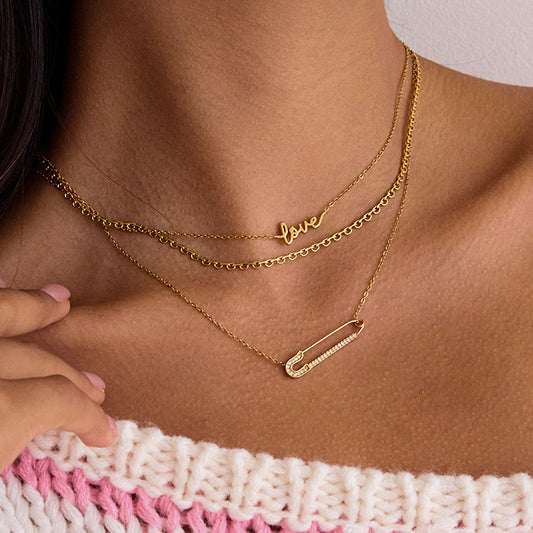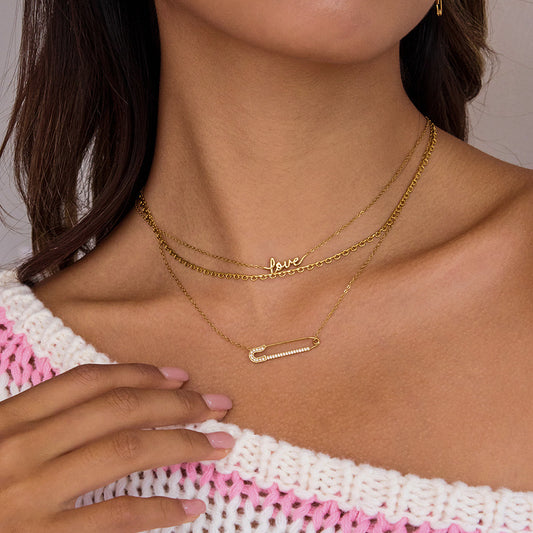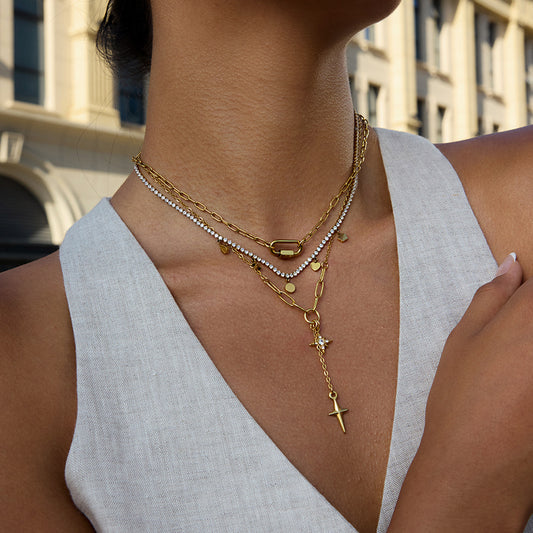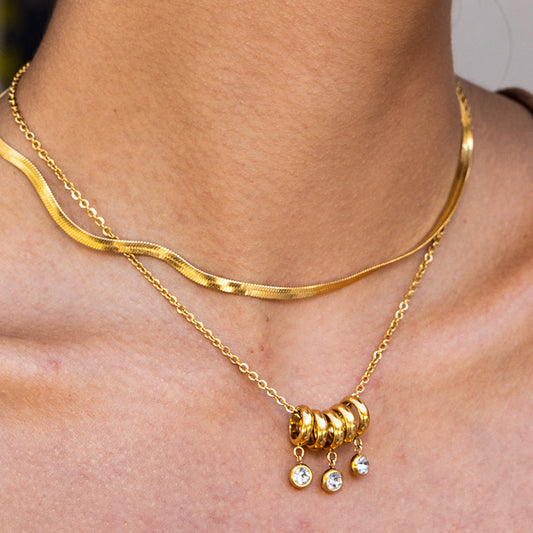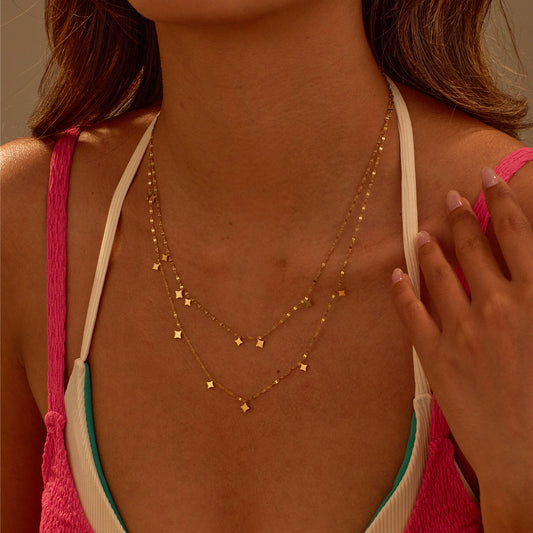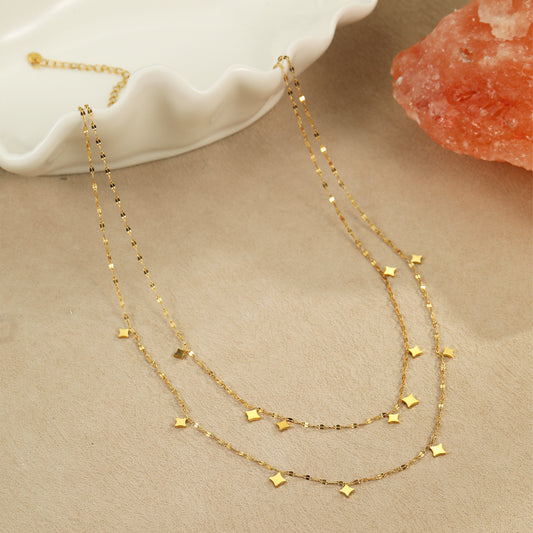Sterling Silver Jewelry lives up to its “Durable, Chic, Worth It” reputation with its long-lasting construction, versatile style, and unbeatable value—making it a staple in jewelry collections worldwide. The global jewelry market size was estimated at USD 366.79 billion in 2024 and is projected to reach USD 578.45 billion by 2033, growing at a CAGR of 5.3%. What makes it stand out? Unlike delicate fine jewelry that requires careful handling or cheap fashion jewelry that fades after weeks, sterling silver jewelry balances toughness (thanks to its alloy composition) with timeless elegance. It works for a casual coffee run, a professional meeting, or a romantic date night—no need to switch between pieces. Whether you’re wearing a sterling silver necklace, a pair of studs, or a stack of bracelets, it adds a polished touch without breaking the bank. Let’s start by defining what sterling silver jewelry is, then explore why it’s a fan favorite, how to style its most popular designs, and everything else you need to make it a permanent part of your collection.
What is Sterling Silver Jewlery
Definition and Core Composition
Sterling Silver Jewelry is crafted from the industry-standard sterling silver alloy—a blend of 92.5% pure silver and 7.5% other metals (most commonly copper, though some brands use zinc or palladium for added durability). This specific ratio isn’t random—it solves the biggest limitation of pure silver (99.9% pure):
-
Pure Silver Shortfall: Pure silver (also called “fine silver”) is extremely soft (Mohs hardness 2.5–3), making it prone to bending, scratching, and losing shape with minimal wear. A pure silver ring might stretch out after weeks of daily use, or a pure silver necklace chain could break easily.
-
Sterling Silver Solution: The 7.5% alloy metals (copper, primarily) boost the hardness to Mohs 3.5–4, creating jewelry that resists damage while retaining silver’s signature bright, cool tone. Copper also enhances the metal’s malleability, allowing jewelers to craft intricate designs (e.g., filigree, engravings) that stay intact over time.
-
Key Authenticity Marker: Genuine sterling silver jewelry is stamped with “925” (the universal code for 92.5% pure silver) or “STERLING” on hidden areas—like the inner band of a ring, the clasp of a necklace, or the back of earrings. This stamp guarantees the jewelry’s purity, distinguishing it from silver-plated or fake silver alternatives.
How Sterling Silver Jewelry Differs from Other Silver Jewlery
It’s easy to confuse sterling silver jewelry with other silver-based options—here’s how they compare:
-
Pure Silver Jewelry (99.9%): Too soft for daily wear; best suited for decorative, occasional pieces (e.g., collector’s items, ceremonial jewelry). It tarnishes quickly and is prone to damage, making it impractical for regular use.
-
Sterling Silver Jewelry (92.5%): The ideal middle ground—hard enough for daily wear, pure enough to retain silver’s natural shine. It tarnishes slower than pure silver and can last for decades with basic care.
-
Silver-Plated Jewelry: A thin layer of silver (0.5–2 microns) bonded to a base metal (brass, nickel). Budget-friendly but short-lived—plating wears off after 6–12 months of daily use, revealing the base metal (which often tarnishes and irritates sensitive skin).
-
Nickel Silver Jewelry: Misleadingly named—contains no silver at all. Made of copper, nickel, and zinc, these pieces are cheap but prone to discoloration and allergic reactions.

Common Finishes for Sterling Silver Jewlery
The finish of sterling silver jewelry impacts its look and versatility—these are the most popular options:
-
Polished (Shiny): Reflects light for a glamorous, eye-catching glow. Perfect for special occasions or anyone who loves bold shine. Polished sterling silver necklaces or bracelets stand out against neutral outfits.
-
Brushed (Matte): Has a soft, muted finish that reduces glare. Ideal for daily wear, as it hides minor scratches and pairs well with casual or professional attire. Brushed sterling silver earrings are a favorite for office looks.
-
Antiqued (Oxidized): Treated with a chemical to create a dark, vintage-inspired patina. The patina highlights intricate details (e.g., engravings, filigree) and gives jewelry a rustic, bohemian vibe. Antiqued sterling silver rings or pendants are great for layering.
Why is Sterling Silver Jewelry so popular
“Durable” – Built for Daily Wear
The top reason sterling silver jewelry is popular is its unmatched durability for everyday use:
-
Scratch and Bend Resistance: The 92.5% silver-copper alloy stands up to routine activities—typing, cooking, carrying bags—without scratching or losing shape. A sterling silver bracelet, for example, won’t develop dents from bumping against a table, and a sterling silver ring won’t stretch out after months of wear.
-
Tarnish Resistance (With Care): While sterling silver does tarnish (a natural reaction to sulfur in the air), it tarnishes slower than pure silver. A quick polish every few weeks restores its shine, and proper storage prevents excessive tarnish.
-
Long Lifespan: With basic care (cleaning, proper storage), sterling silver jewelry lasts 10–50 years—many pieces become family heirlooms. Unlike fast-fashion jewelry that’s discarded after a season, sterling silver is a long-term investment.
:strip_icc()/BHG-How-to-Clean-Silver-Jewelry-Primary-0282-9e11dc0e04904cb1a610bb6f9a58acb3.jpg)
“Chic” – Timeless Style for Every Look
Sterling silver jewelry’s cool, bright tone makes it a versatile accessory that fits any style:
-
Minimalist Style: Sleek sterling silver studs, thin necklaces, or simple bands add subtle polish without overwhelming minimalist outfits (e.g., a white tee and jeans, a little black dress).
-
Bohemian Style: Antiqued sterling silver jewelry with engravings, gemstones, or tassels complements flowy dresses, fringe vests, and wide-leg pants—perfect for festivals or casual weekends.
-
Professional Style: Brushed sterling silver earrings, small pendants, or delicate bracelets add elegance to blazers, button-downs, and tailored trousers. They’re polished enough for meetings but not too flashy.
-
Glamorous Style: Polished sterling silver necklaces with gemstones (e.g., cubic zirconia, birthstones) or statement earrings elevate formal wear—ideal for weddings, anniversaries, or parties.
“Worth It” – Affordable Luxury
Sterling silver jewelry offers the look of luxury without the high price tag:
-
Budget-Friendly: Plain sterling silver pieces (e.g., studs, simple bands) start at \(25–\)50; styles with gemstones or intricate designs cost \(50–\)150. This is far more affordable than gold jewelry (14k gold styles start at $150+) but still feels high-quality.
-
Value for Money: Unlike disposable fashion jewelry, sterling silver retains its value and can even be resold or repurposed (e.g., melted down to make new pieces) if you no longer wear it.
-
Accessible to All: Whether you’re a student, a working professional, or someone building a jewelry collection, sterling silver jewelry is within reach—no need to splurge on fine jewelry to look put-together.
Hypoallergenic for Most Skin Types
Sterling silver is one of the most skin-friendly metals, making it popular for people with sensitivities:
-
Nickel-Free (Mostly): Reputable sterling silver jewelry uses copper or zinc as the alloy (not nickel), which is the main cause of jewelry allergies. Over 95% of people with sensitive skin can wear nickel-free sterling silver without redness, itching, or rashes.
-
Safe for Daily Contact: Unlike cheap silver-plated jewelry (which exposes base metals over time), sterling silver’s alloy is low-allergen, so it’s safe to wear against the skin all day.

Popular styles of Sterling Silver Jewlery
Sterling Silver Stud Earrings (Everyday Essential)
-
Design: Small, round or square sterling silver posts with a flat or slightly domed top. Size ranges from 3mm (micro-studs) to 8mm (medium). Finishes: Polished or brushed. Some styles include small gemstones (e.g., cubic zirconia, birthstones) for extra sparkle.
-
Why It’s Popular: The most versatile sterling silver jewelry style—works with every outfit, from loungewear to formal gowns. Comfortable for all-day wear and easy to put on.
-
Best For: Daily wear, work, school, or anyone new to sterling silver jewelry. Prices: \(25–\)80 (plain); \(50–\)120 (with gemstones).
Sterling Silver Pendant Necklace (Sentimental Favorite)
-
Design: A single pendant (10–20mm) in a sterling silver setting, hanging from a thin or medium chain (princess length, 16–18 inches, is most popular). Pendants can be simple (hearts, initials, stars) or intricate (engravings, nature-inspired shapes like leaves or animals).
-
Why It’s Popular: Deeply personal—pendant necklaces can be customized (e.g., engraved with a name, date, or quote) to mark milestones (birthdays, anniversaries, graduations). The cool silver tone complements any skin tone.
-
Best For: Casual outings, work, gifting. Prices: \(35–\)100 (plain); \(80–\)200 (customized or with gemstones).

Sterling Silver Bracelet (Stackable Staple)
-
Design: Available in three main styles:
-
Chain Bracelets: Thin or medium sterling silver chains (e.g., snake chain, curb chain) with a secure clasp.
-
Bangle Bracelets: Rigid or flexible sterling silver bangles—some have hinges for easy wear.
-
Charm Bracelets: Sterling silver chains designed to hold detachable charms (e.g., birthstone charms, initial charms).
-
Why It’s Popular: Perfect for stacking—mix and match chain bracelets, bangles, or charm bracelets for a personalized look. The durable design stands up to daily use.
-
Best For: Everyday wear, layering with other jewelry, gifting. Prices: \(40–\)120 (chain/bangle); \(60–\)180 (charm bracelet + 2–3 charms).
Sterling Silver Ring (Versatile Statement)
-
Design: Available in endless styles:
-
Band Rings: Thin or wide sterling silver bands—plain, engraved, or with small gemstones.
-
Solitaire Rings: A single gemstone (e.g., cubic zirconia, turquoise) set in a sterling silver band.
-
Stackable Rings: Tiny sterling silver rings (1–2mm wide) designed to be worn together on one finger.
-
Why It’s Popular: Adds a touch of style to any hand—band rings are great for daily wear, solitaire rings for special occasions, and stackable rings for trendy layering.
-
Best For: Daily wear, work, date nights, gifting. Prices: \(30–\)80 (band/stackable); \(70–\)150 (solitaire).
How to wear Sterling Silver Jewlery
Pairing with Outfits (By Occasion)
-
Everyday Casual:
-
Outfit: High-waisted light blue jeans, a white cropped cotton tee, and white sneakers.
-
Sterling Silver Jewelry: 5mm polished sterling silver studs + a thin sterling silver chain bracelet. The small studs add subtle shine, and the bracelet complements the casual vibe without overcomplicating it.
-
Work/Professional:
-
Outfit: A navy blazer, a light blue button-down shirt, and tailored black trousers.
-
Sterling Silver Jewelry: Brushed sterling silver small hoop earrings (15mm) + a simple sterling silver pendant necklace (initial or small heart). The low-profile designs feel polished, and the brushed finish avoids glare during meetings.
-
Date Night:
-
Outfit: A black slip dress, strappy silver heels, and a small clutch.
-
Sterling Silver Jewelry: Polished sterling silver statement earrings (dangle style with cubic zirconia) + a thin sterling silver bangle. The earrings add glamour, and the bangle complements the dress’s simplicity.
-
Formal Event (Wedding/Gala):
-
Outfit: A floor-length emerald green gown or a silver sequined dress.
-
Sterling Silver Jewelry: Antiqued sterling silver pendant necklace (with a large gemstone) + matching sterling silver drop earrings. The antiqued finish adds elegance, and the gemstones balance the gown’s color.
Styling for Different Skin Tones
Sterling silver’s cool tone flatters most skin tones—here’s how to maximize its appeal:
-
Warm Skin Undertones (Olive, Tan, Deep): The cool silver creates a striking contrast with warm skin. Pair with gemstones that have cool hues (e.g., blue topaz, amethyst) to enhance the contrast. For example: A sterling silver necklace with a blue topaz pendant looks vibrant against olive skin.
-
Cool Skin Undertones (Fair, Pink, Porcelain): Sterling silver’s brightness enhances cool undertones, giving the skin a fresh, radiant look. Stick to plain sterling silver or gemstones with cool tones (e.g., sapphires, aquamarines). A simple sterling silver bangle, for example, looks crisp against fair skin.
-
Neutral Skin Undertones: All sterling silver styles work! Mix and match finishes (polished + brushed) or add gemstones with warm or cool hues—whatever fits your mood.
Tips for Layering Sterling Silver Jewelry
Layering sterling silver jewelry is a trendy way to add depth—follow these rules to keep the look polished:
-
Vary Lengths (Necklaces): Pair a short choker (14 inches) with a medium princess-length necklace (18 inches) and a long matinee necklace (24 inches). This creates a “staggered” look that fits all necklines.
-
Mix Widths (Bracelets/Rings): For bracelets, pair a thin chain bracelet with a medium bangle and a thick charm bracelet. For rings, stack a tiny band (1mm) with a medium solitaire ring (2mm) and a wide band (3mm).
-
Limit to 3–4 Pieces Per Area: Don’t overdo it—3–4 necklaces, 3–4 bracelets, or 2–3 rings per hand is enough. Too many pieces look cluttered.
-
Match Finishes (Mostly): Stick to one or two finishes (e.g., all polished, or polished + brushed) for a cohesive look. Avoid mixing polished, brushed, and antiqued finishes—this feels messy.
Sterling Silver Jewlery: perfect gift for your girlfriend
Symbolizes Thoughtfulness and Longevity
Sterling Silver Jewelry is a perfect gift for your girlfriend because it’s personal, durable, and meaningful:
-
Thoughtful Personalization: Choose a style that fits her taste—minimalist studs if she loves simplicity, a customized pendant if she’s sentimental, or a charm bracelet if she loves collecting pieces. Add a personal touch (e.g., engrave her name, your anniversary date) to make it even more special.
-
Long-Lasting Reminder: Unlike flowers (which fade) or chocolates (which are eaten), sterling silver jewelry lasts for years. Every time she wears it, she’ll think of you and the occasion you gave it to her for.
-
Versatile for Her Life: She can wear it daily, to work, or to special events—no need to hide it away for “nice” occasions. It’s a gift that fits her busy, everyday life.
Fits Her Style (No Matter What She Loves)
With so many sterling silver jewelry styles, you can find one that matches your girlfriend’s aesthetic:
-
Minimalist Girlfriend: Thin sterling silver chain necklace (16 inches) + small polished studs. Simple, elegant, and fits her “less is more” vibe.
-
Bohemian Girlfriend: Antiqued sterling silver pendant necklace (nature-inspired shape, e.g., leaf or moon) + stackable sterling silver rings. The rustic finish aligns with her free-spirited style.
-
Glamorous Girlfriend: Polished sterling silver statement earrings (dangle with cubic zirconia) + a thin sterling silver bangle. Sparkly enough for date nights or parties.
-
Sentimental Girlfriend: Customized sterling silver pendant necklace (engraved with a quote that’s meaningful to both of you) + a charm bracelet with a small charm representing a shared memory (e.g., a coffee cup charm for your weekly coffee dates).
Celebrates Relationship Milestones
Sterling Silver Jewelry is ideal for marking key moments with your girlfriend:
-
Birthday: A sterling silver birthstone necklace or earrings (her birthstone set in silver). Pair it with a handwritten note explaining why you chose it.
-
Anniversary: A customized sterling silver pendant (engraved with your anniversary date) or a charm bracelet with a charm that represents your relationship (e.g., a heart with both your initials).
-
First Trip Together: A sterling silver pendant shaped like the destination (e.g., a tiny Eiffel Tower for Paris, a palm tree for a beach trip). It’s a sweet reminder of your adventure.
-
Just Because: Sometimes, the best gifts are unexpected. A small sterling silver stackable ring or a thin bracelet says, “I was thinking of you, and this made me smile.”
How to clean Sterling Silver Jewlery
Keeping your sterling silver jewelry shiny and tarnish-free is easy with gentle, non-abrasive methods—avoid harsh chemicals that can damage the metal or remove finishes (like antiqued patina). Here’s a step-by-step guide:
Supplies Needed (Mild and Effective)
-
Mild Dish Soap: Unscented, dye-free (no bleach, ammonia, or citrus—these erode silver or fade finishes).
-
Lukewarm Water: Not hot (hot water opens silver’s pores, trapping dirt) or cold (cold water doesn’t dissolve grime).
-
Soft Tools:
-
Microfiber cloth (unused—paper towels scratch silver).
-
Soft-bristled toothbrush (extra-soft, unused—for crevices like engravings or gemstone settings).
-
Cotton swabs (for hard-to-reach areas, e.g., necklace clasps).
-
Silver Polishing Cloth: Optional (for tarnish—look for “non-abrasive” labels to avoid scratching polished or brushed finishes).
Step-by-Step Cleaning Process
-
Basic Weekly Cleaning (3–5 Minutes):
-
Mix 1 drop of mild dish soap with 1 cup of lukewarm water in a small bowl. Stir gently to create suds (avoid bubbling—bubbles get trapped in silver’s pores).
-
For Smooth Surfaces (Studs, Plain Bands): Dip the microfiber cloth in soapy water, wring out excess (cloth should be damp, not soaking). Wipe the jewelry in circular motions—focus on areas that touch skin (e.g., ring inner bands, necklace clasps) where oils build up.
-
For Intricate Designs (Engravings, Filigree): Use the soft toothbrush to gently scrub crevices. For example, an antiqued sterling silver pendant with engravings needs the toothbrush to lift dirt from the patinaed grooves—be gentle to avoid removing the patina.
-
For Gemstone-Accented Pieces: Wipe gemstones with a damp cloth; use a cotton swab to clean around settings (prongs or bezels). Avoid scrubbing soft gems (e.g., opals, pearls) with the toothbrush—this scratches them.
-
Rinse thoroughly: Hold jewelry under lukewarm running water (use a strainer to avoid dropping it down the drain). Pat dry immediately with a microfiber cloth—never air-dry (water spots dull silver).
-
Deep Cleaning for Tarnish (Monthly):
-
Light Tarnish (Faint Dark Spots): Use a non-abrasive silver polishing cloth. Fold the cloth around the jewelry and rub gently in circular motions—focus on tarnished areas until silver regains its bright tone. For brushed or antiqued finishes, rub lightly to avoid removing the texture or patina.
-
Heavy Tarnish (Darker Patina): Make a paste with 1 part baking soda + 2 parts lukewarm water (mix until thick). Apply a small amount to the microfiber cloth, then gently rub tarnished areas. Let the paste sit for 2 minutes (no longer—baking soda is slightly abrasive), then rinse and dry immediately.
-
Antiqued Silver: Skip baking soda (it removes patina). Instead, wipe with a dry microfiber cloth to lift surface dirt—antiqued silver’s dark finish is intentional, so minimal cleaning is needed.
Finish-Specific Tips
-
Polished Silver: Avoid over-polishing (it wears down the shiny finish over time). Polish only when tarnish is visible.
-
Brushed Silver: Use gentle, straight strokes (not circular) when cleaning—this preserves the brushed texture.
-
Antiqued Silver: Never use polishing cloths (they strip the patina). Stick to dry wiping or mild soapy water for dirt.
How to store sterling silver Jewlery
Proper storage prevents tarnish, scratches, and damage—extending your sterling silver jewelry’s lifespan. Follow these guidelines:
Key Storage Principles
-
Minimize Air Exposure: Tarnish forms when silver reacts with sulfur in the air—sealed containers slow this process.
-
Prevent Scratching: Silver is softer than metals like stainless steel—store pieces separately to avoid scratches.
-
Control Moisture: Humidity speeds up tarnish—keep storage areas dry (avoid bathrooms or basements).
Recommended Storage Solutions
-
Airtight Jewelry Pouches:
-
Best for individual pieces (e.g., studs, rings, small pendants). Use velvet or microfiber pouches (they’re soft and non-abrasive). Add a silica gel packet to each pouch—this absorbs excess moisture.
-
Example: Store a pair of sterling silver studs in a small pouch, and a plain band in another—keep pouches in a drawer or jewelry box.
-
Lined Jewelry Boxes:
-
Ideal for larger collections. Choose boxes with anti-tarnish felt or velvet liners (these protect silver from scratches and slow tarnish). Look for boxes with divided compartments—store necklaces, bracelets, and rings in separate sections.
-
Pro Tip: Hang necklaces on built-in hooks or necklace trees inside the box—this prevents tangling and chain kinks (kinks weaken sterling silver chains over time).
-
Anti-Tarnish Strips/Bags:
-
For long-term storage (e.g., seasonal jewelry). Place anti-tarnish strips (available online for \(5–\)10 per pack) in jewelry boxes or airtight containers—they absorb sulfur and moisture. For bulk storage (e.g., multiple bracelets), use anti-tarnish bags (ziplock-style with anti-tarnish lining).
Daily Storage Habits
-
Wipe Before Storing: After wearing, wipe jewelry with a dry microfiber cloth to remove skin oils, lotion, or sweat—this prevents buildup that leads to tarnish.
-
Remove Before High-Risk Activities: Take off sterling silver jewelry before swimming (chlorine erodes silver), cooking (oils and spices build up), or applying beauty products (perfume, hairspray stains silver).
-
Check Monthly: Inspect stored jewelry for early tarnish or loose gemstones. Catching issues early makes cleaning or repairs easier.
How to make sterling silver Jewlery
Making your own sterling silver jewelry is a rewarding hobby—you can create custom pieces that fit your style. Below is a beginner-friendly guide to making a simple sterling silver ring (a great first project):
Tools and Materials You’ll Need
-
Sterling Silver Supplies:
-
Sterling silver wire (18–20 gauge for rings—thicker wire = sturdier ring).
-
Sterling silver sheet (optional—for pendants or charms).
-
Basic Tools:
-
Jewelry pliers (round-nose, chain-nose, flat-nose—all essential for bending and shaping silver).
-
Ring mandrel (a metal rod with size markers—used to shape the ring to your size).
-
Metal file (fine-grit—smooths rough edges after cutting).
-
Sandpaper (400–600 grit—polishes the ring’s surface).
-
Torch (butane or propane—for soldering, optional for beginners).
-
Flux and solder (for joining silver pieces, optional for simple projects).
-
Safety Gear:
-
Safety glasses (protects eyes from flying metal shavings).
-
Heat-resistant mat (if using a torch).
-
Gloves (prevents fingerprints on silver).
Step-by-Step: Make a Simple Sterling Silver Ring
-
Measure and Cut the Wire:
-
Use a ring sizer to find your finger size (e.g., size 7 = 67mm circumference). Add 5mm to the measurement (extra length for joining the ends).
-
Cut the sterling silver wire to this length with wire cutters—use sharp cutters to avoid crushing the wire (crushed wire is hard to shape).
-
Shape the Ring:
-
Hold the wire with flat-nose pliers and bend it into a circle around the ring mandrel—align the wire with your size marker. Use the mandrel to gently tap the wire into a perfect circle (tap lightly to avoid bending the mandrel).
-
Overlap the wire ends by 2–3mm—this creates a strong join.
-
Join the Ends (2 Methods):
-
Beginner-Friendly (No Soldering): Use round-nose pliers to twist the overlapping ends together (2–3 twists). Trim excess wire with cutters, then file the end smooth with a fine-grit file—this prevents sharp edges that irritate skin.
-
Advanced (Soldering): Apply flux to the overlapping ends (flux prevents oxidation during heating). Place a small piece of sterling silver solder on the join. Heat the area with a torch until the solder melts and flows into the gap. Let it cool, then file and sand the join smooth.
-
Smooth and Polish:
-
Use 400-grit sandpaper to smooth the entire ring—focus on the join and any rough edges. Switch to 600-grit sandpaper for a finer finish.
-
For a polished look: Use a microfiber cloth or a buffing wheel (attach to a Dremel tool, optional) to rub the ring until it shines. For a brushed finish: Rub the ring with a wire brush in straight, even strokes.
-
Final Check:
-
Slide the ring on your finger to test fit—adjust the mandrel if it’s too loose/tight. Wipe with a clean cloth to remove fingerprints.
Tips for Beginners
-
Start Small: Begin with simple projects (rings, small pendants) before moving to complex designs (necklaces with multiple components).
-
Practice with Copper First: Copper wire is cheaper than sterling silver—use it to practice shaping and joining before working with sterling.
-
Take Safety Seriously: Always wear safety glasses when cutting or filing metal, and use a torch in a well-ventilated area.
Frequently asked questions about Sterling Silver Jewlery
Will sterling silver jewelry turn my skin green?
Rarely—only if the jewelry contains nickel or isn’t genuine:
-
Genuine Sterling Silver (925): No—pure silver and copper (the main alloy) don’t react with skin to cause green discoloration. Any green tint is likely from lotion, perfume, or sweat mixing with silver (it wipes off with soap and water).
-
Nickel-Containing Sterling Silver: Yes—some cheap brands add nickel to the alloy (to cut costs). Nickel reacts with sweat to form green salts, causing irritation. Always choose “nickel-free” sterling silver.
-
Silver-Plated Jewelry (Mistaken for Sterling): Yes—when plating wears off, the base metal (brass, nickel) reacts with skin, leaving a green mark. This is a sign the jewelry isn’t genuine.
Can I wear sterling silver jewelry in the shower?
No—shower water and products damage sterling silver over time:
-
Chlorine (Tap Water/Pools): Eats away at silver, causing it to fade or become brittle.
-
Soap/Shampoo: Leaves a sticky residue that traps dirt, making jewelry look dull.
-
Moisture: Speeds up tarnish—especially for polished sterling silver.
Remove sterling silver jewelry before showering, and pat it dry immediately if it gets wet.
How long does sterling silver jewelry last?
With proper care, sterling silver jewelry lasts 10–50 years—many pieces become family heirlooms:
-
Daily Wear Pieces (Studs, Plain Bands): 10–20 years. You may need to polish them monthly, but the silver itself won’t wear out.
-
Occasional Wear Pieces (Statement Earrings, Pendants): 30–50 years. Less frequent use means less wear—these pieces stay in excellent condition with minimal cleaning.
-
Key to Longevity: Avoid harsh chemicals, store properly, and clean regularly. If jewelry gets scratched, a jeweler can polish it (costs \(10–\)20) to restore its shine.
Is sterling silver jewelry a good investment?
Yes—sterling silver retains value and is more accessible than gold or platinum:
-
Monetary Value: Silver prices are stable (as of 2024, ~$24 per ounce) and tend to rise during economic uncertainty. You can resell sterling silver jewelry for its metal weight (jewelers pay ~50–70% of the current silver price).
-
Sentimental Value: Custom or handcrafted sterling silver pieces (e.g., engraved pendants, family birthstone rings) have emotional value that goes beyond money—they’re often passed down as heirlooms.
-
Budget Note: Fast-fashion sterling silver-plated jewelry isn’t an investment—stick to solid 925 sterling silver for long-term value.
Can sterling silver jewelry be repaired?
Yes—most issues (scratches, loose gemstones, broken chains) are fixable by a jeweler:
-
Scratches: Polishing removes light scratches; deeper scratches may need buffing (costs \(10–\)30).
-
Loose Gemstones: Jewelers re-set stones using new prongs or bezel settings (costs \(20–\)50, depending on gemstone size).
-
Broken Chains: Small chain links can be soldered back together (costs \(15–\)40); severely broken chains may need a new section added.
-
Tarnish Damage: Heavy tarnish can be removed with professional cleaning (costs \(20–\)30)—avoid trying to fix it at home with harsh chemicals.
Conclusion: Sterling Silver Jewlery– Durable, Chic, Worth It
Sterling Silver Jewelry is the ultimate balance of practicality and style—durable enough for daily wear, chic enough for any occasion, and worth every penny for its long-lasting value. Its 92.5% silver composition ensures it retains a bright, timeless shine, while its versatile designs adapt to minimalist, bohemian, or glamorous styles. Whether you’re wearing it to work, gifting it to your girlfriend for her birthday, or making a custom piece at home, it’s a jewelry category that grows with you—never feeling outdated, always feeling polished.
From cleaning and storage to DIY tips, this guide has covered everything you need to make the most of your sterling silver jewelry. With simple care—gentle cleaning, airtight storage, and avoiding harsh chemicals—your pieces will stay vibrant for decades, becoming cherished parts of your story.
Ready to add “Durable, Chic, Worth It” sterling silver jewelry to your collection (or gift it to someone special)? Explore our curated selection today, featuring:
-
Everyday Essentials: Plain sterling silver studs, thin chain necklaces, and stackable bands—\(25–\)80, perfect for daily wear.
-
Sentimental Gifts: Custom engraved pendants, birthstone earrings, and charm bracelets—\(50–\)200, ideal for birthdays or anniversaries.
-
Statement Pieces: Antiqued filigree necklaces, gemstone-accented bangles, and dangle earrings—\(80–\)300, great for formal events or date nights.
All orders include free shipping on purchases over $50, a 30-day return policy, and a free microfiber cleaning cloth to keep your jewelry shiny. For a limited time, use code SILVER20 at checkout to get 20% off your first sterling silver jewelry order—don’t miss this chance to own jewelry that’s as long-lasting as it is stylish.
Your jewelry box deserves pieces that work as hard as you do. Shop our Sterling Silver Jewelry collection now and discover why it’s the ultimate “Durable, Chic, Worth It” accessory.


